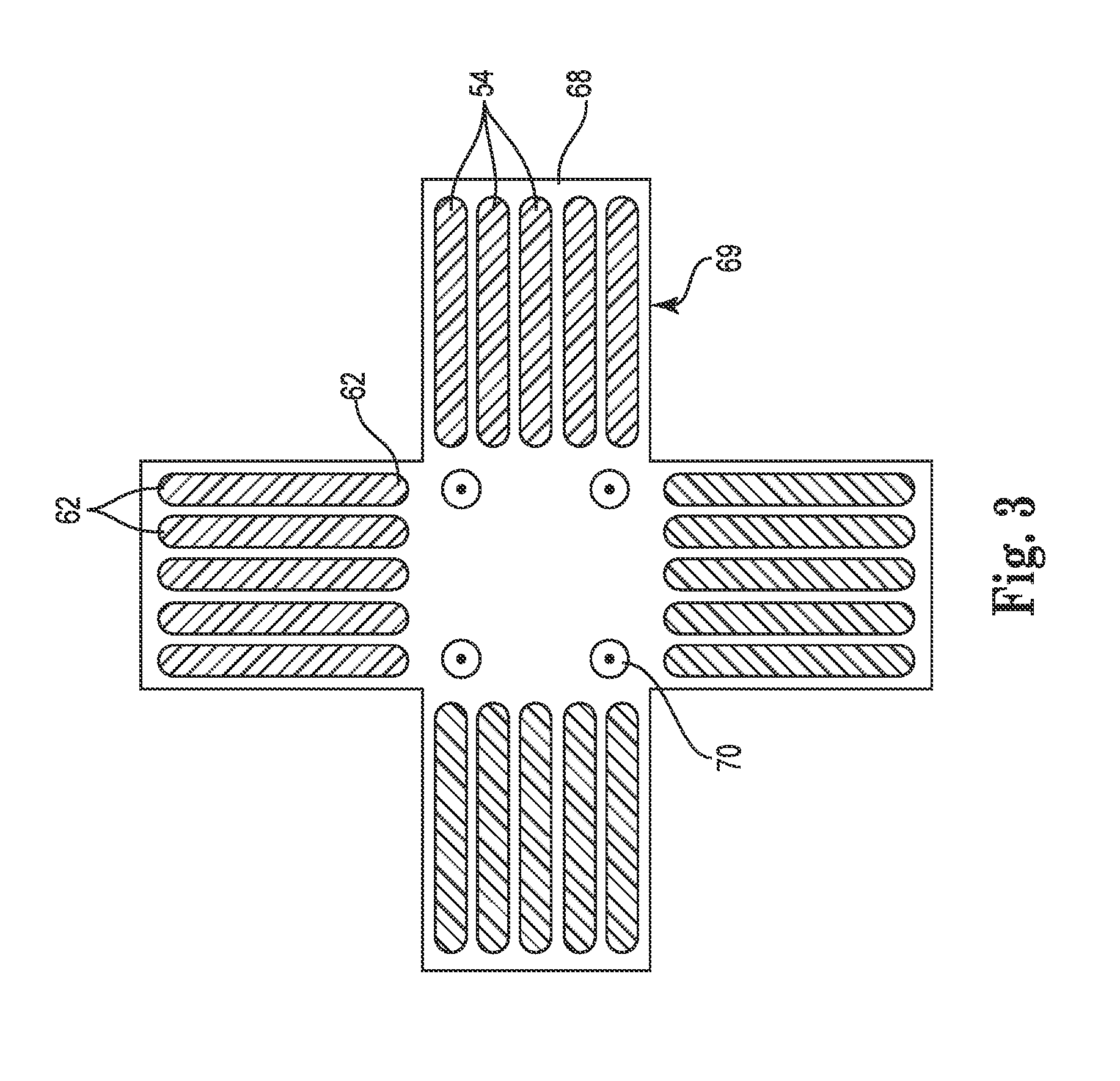Simulated wirebond semiconductor package
a semiconductor and wire bond technology, applied in the direction of non-electric welding apparatus, manufacturing tools, solventing apparatus, etc., can solve the problems of device not being connected to the final pcb, size and distance between die terminals being so small, and achieve high-performance effects
- Summary
- Abstract
- Description
- Claims
- Application Information
AI Technical Summary
Benefits of technology
Problems solved by technology
Method used
Image
Examples
Embodiment Construction
[0040]FIG. 1 is a side sectional view of substrate 50 with first layer 52A of a simulated wirebonds 54 for making a semiconductor package in accordance with an embodiment of the present disclosure. In the illustrated embodiment, the substrate 50 optionally includes pre-formed recesses 60A. The first layer 52A is preferably a dielectric material 56 selectively printed on surface 58 of the substrate 50 around recesses 60A.
[0041]As best illustrated in FIG. 2, recesses 60B in the dielectric material 56 and the recesses 60A are then metalized to create contact pads 62. Metalizing can be performed by printing conductive particles followed by a sintering step, by printing conductive inks, or a variety of other techniques. The metalizing material is preferably of copper or similar metallic materials such as phosphor bronze or beryllium-copper. The resulting contact pads 62 are optionally plated to improve conductive properties. The plating is preferably a corrosion resistant metallic materi...
PUM
| Property | Measurement | Unit |
|---|---|---|
| Dielectric polarization enthalpy | aaaaa | aaaaa |
| Shape | aaaaa | aaaaa |
| Electrical conductor | aaaaa | aaaaa |
Abstract
Description
Claims
Application Information
 Login to View More
Login to View More - Generate Ideas
- Intellectual Property
- Life Sciences
- Materials
- Tech Scout
- Unparalleled Data Quality
- Higher Quality Content
- 60% Fewer Hallucinations
Browse by: Latest US Patents, China's latest patents, Technical Efficacy Thesaurus, Application Domain, Technology Topic, Popular Technical Reports.
© 2025 PatSnap. All rights reserved.Legal|Privacy policy|Modern Slavery Act Transparency Statement|Sitemap|About US| Contact US: help@patsnap.com



